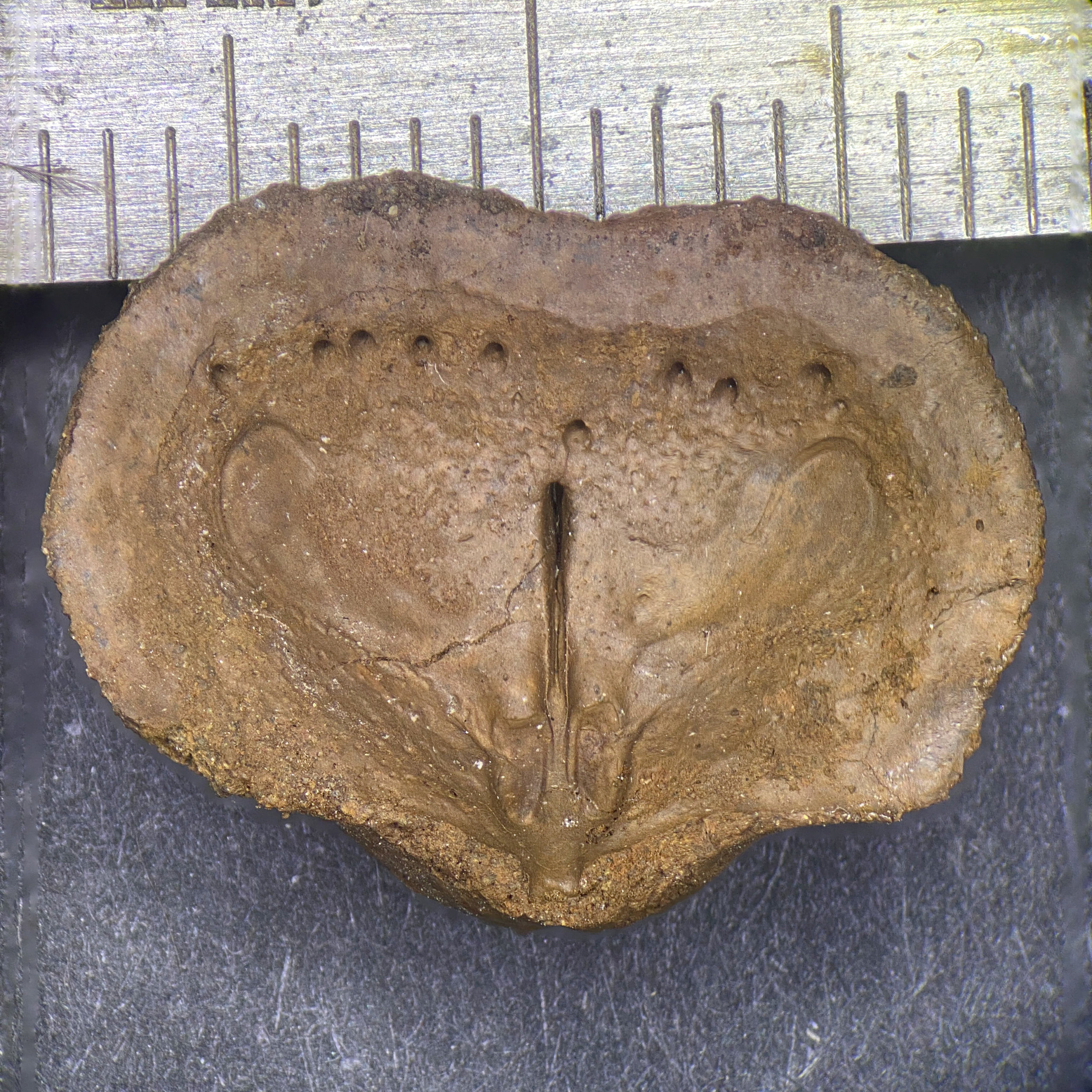Yet again, I need to reverse the identification of the specimens below. I will be altering the article, but the specimen referenced found in the Brush Creek limestone is not E. longispinus, but Kozlowskia splendens. L. longispinus is found in the late Mississippian of European and U.K. rocks.
Eomarginifera longispinus
345.3 to 265.0 MYA
Scientific Classification
Kingdom:
Animalia
Phylum:
Brachiopoda-Articulata
Class:
Strophomenata
Order:
Productida
Family:
Productidae
Genus:
Eomarginifera
Species:
longispinus
Sowerby 1814
Eomarginifera longispinus is a species of brachiopod that existed for over 80 million years. This specimen is one of my first ten recorded specimens. It is unique because it is preserved in the soft punky layer that sits below and above the limestone stratum. The specimen became wrinkled after storage, as it’s made of a soft material. Eomarginifera has sparse spines (Qiao et al, 2017), and careful examination of the outside of the preserved specimen shell shows where the spines were situated.
Catalog Number: CG-0008
Specimen Preservation
The soft material is a curse and a blessing. The curse is how fragile it is. A drop or other physical abuse could render it destroyed. However, the amount of detail captured is incredible. This is the only brachiopod specimen I have recovered where the space for the lophophore is preserved. Brachiopods have a twin set of lophophores that are used for suspension feeding. The shell opens and water passes through. This feeding organ filters nutrients from seawater. The brachial ridge is preserved in what looks like the shape of the seeds of a Maple tree.
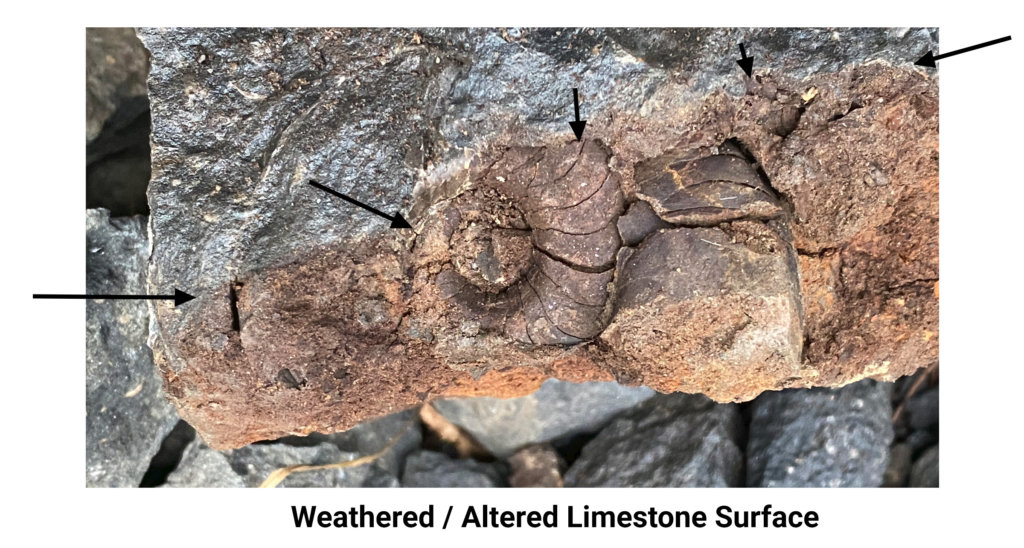
Sowerby’s Account
In 1812, James Sowerby published a volume for what was known as Mineral Conchology at the time. The term Conchology is not used today but appears to be the study of shells. Over two hundred years ago, in 1812, the species name longispinus was determined for the genus Productus. It wasn’t until 1930 that Muir-Wood would assign this to its own genus, Eomarginifera. Below is Sowerby’s original description of this genus and species. In looking at the illustration, it appears that several different species were presented as illustrated examples.
Original Description of Productus longispinus
PRODUCTUS longispinus*
TAB. LXVIII. — Fig. 1.
Spec. Char. Eared; convex valve indented in the middle, broader than long, the other concave ; hinge long, one very long and several smaller spines near each side of the concave valve.
The ears are triangular, gradually extended from the sides of the shell, and bounded at the back by the straight linear hinge, which is about half as long again as the shell, and equal to its width. All the spines are tubular, the two principal ones are nearly straight and cylindrical, attached to the sides of the convex valve, and extending in a line parallel to the hinge, the other spines are placed between these and the beak ; in the only specimen I have examined there are two small holes near the front edge, probably the remains of spines which have been broken off. The reflexed margin is entirely lost, but the great curve of the concave valve and the blunt edge indicate it. Length half an inch.
I name this from its remarkable spines, of the extent of which when perfect I am not certain ; they diminish but little in half an inch, so that to come to a point they would be perhaps an inch and a half long; they are apparently broken, which shows their tubular construction, and from what I have seen in other species, I should guess that they open into the shell for some purpose suited to the nature of its inhabitant. “It is from the great Limestone stratum which traverses in a northerly direction the county of Linlithgow, and constitutes a part of the independent Coal formation of the Lothians, Scotland;” Rev. J. Fleming.
– Sowerby, Vol 1, Page 154,
Sowerby’s Illustration of Productus longispinus
The illustration below perhaps represents the entire genus. Figure 2 looks the closest to Eomarginifera longispinus as the middle of the shell is much wider than the hinge portion.
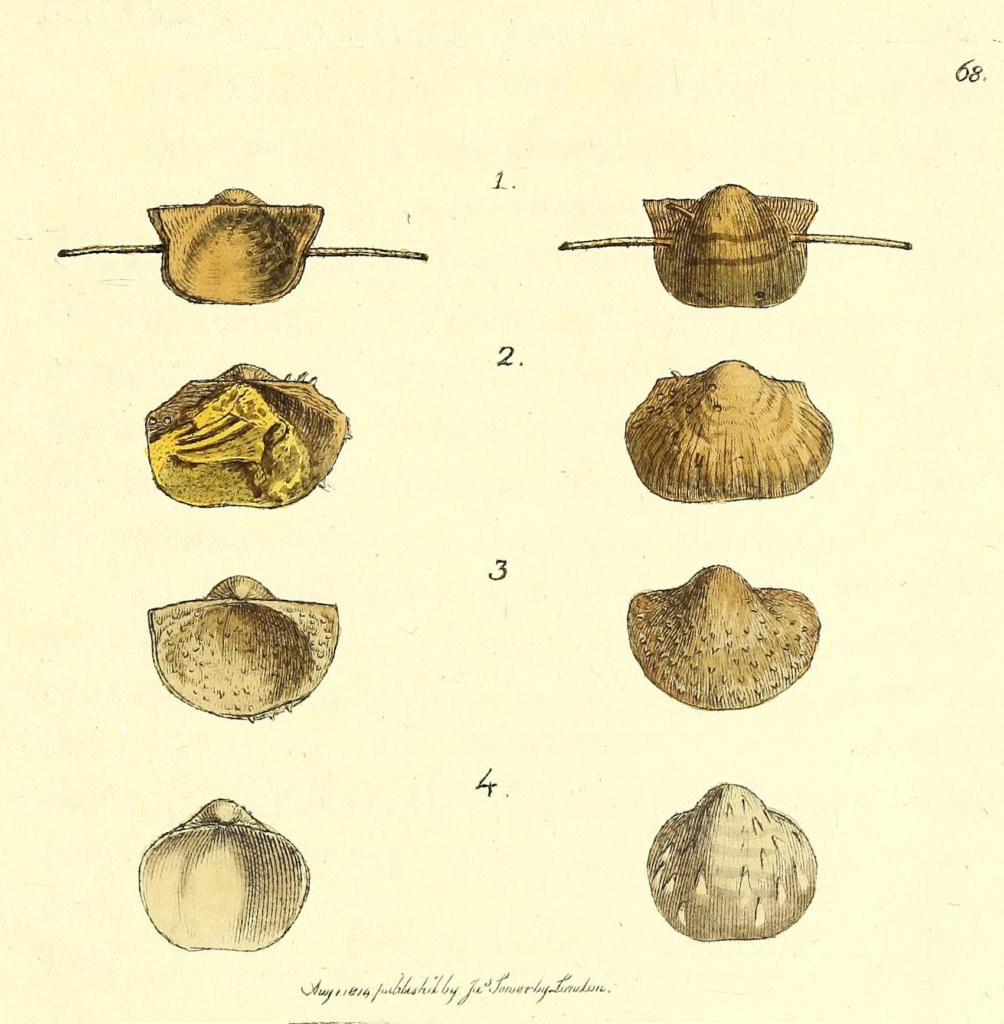
Muir-Wood assigns a new genus
In 1930, Helen M. Muir-Wood wrote about the classification of the British Carboniferous Brachiopod subfamily Productinæ. Fifteen years prior to her paper, members of Productus had been assigned to at least twenty genera or subgenera (1930 Muir-Wood). However, she concluded, there were additional groups still assigned to Productus that needed to be distilled.
Eomarginifera, gen. nov., is proposed for the longispinus group with P. longispinus as genotype
H.M. Muir-Wood, 1930
She published a key to identifying each new designation, which is useful. Particularly for Eomarginifera, it was stated that:
Criteria: Shell ornamented by ribs and costae on the visceral disk and anteriorly by costae only. Costae bifurcating, intercalations rare.
Sub-criteria: (c) Marginal ridge in interior of brachial valve. Shell small, with six spines symmetrically arranged, on pedicle valve
Focus Stacked Photographs of Eomarginifera longispinus
This isn’t the first time I’ve posted about this specimen. The original post name is Unidentified Brachiopod III. I often illustrate specimens, and upon reviewing the photographs I noticed the focus was not deep. Focus stacking is a way to increase the depth of focus for specimens photographed through the microscope. I took new photographs and produced three images.
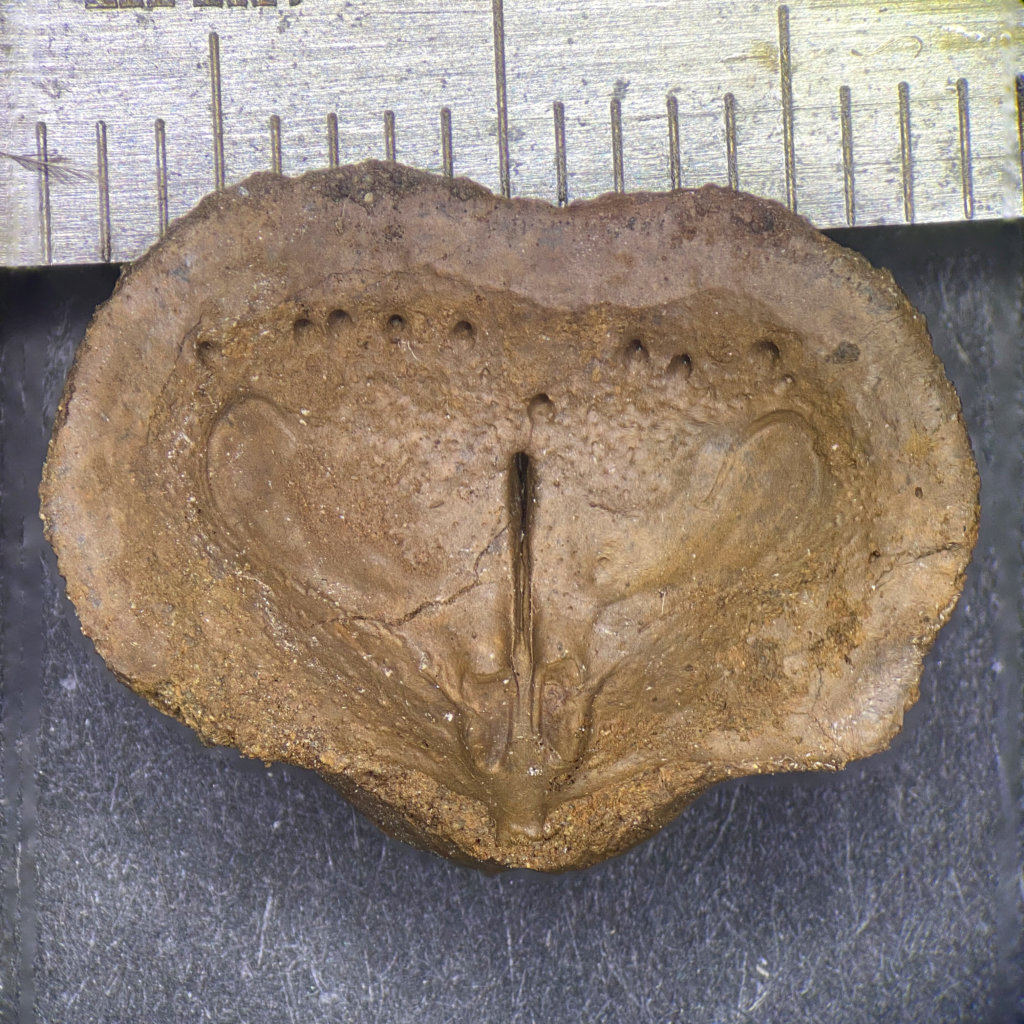


Fossilized Brachiopod Internal Features
Below is a detailed map of what each internal feature is. The Brachial ridge supported the lophophores. The Median Septum helps to support the cardinal process. The adductor muscle scar is where the adductor muscles would have attached. These would have closed the shell by contracting. Last, the pits were likely anchor points for the mantle to hold itself within the shell. The mantle is a secreted lining that encloses the living creature within the shell. Where the shell changed color at the edges would likely be the edge of the mantle. This is very apparent near the anterior portion of the shell.

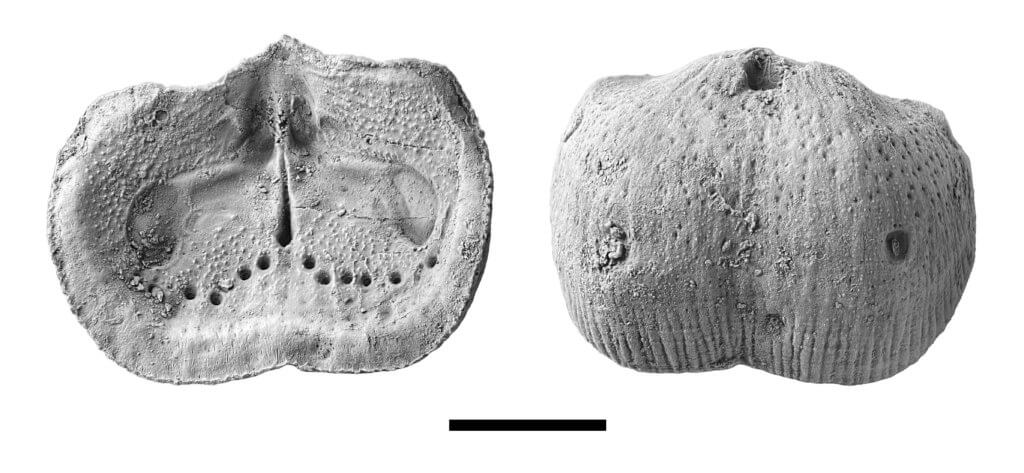
Previous Post about CG-0008
References
- 1812, Sowerby, J., The Mineral Conchology of Great Britain; or Coloured Figures and Descriptions of those Remains of Testaceous Animals or Shells, which has been preserved at various times and depths of the earth., P. 1-234
- 1930, Muir-Wood, H. M., VII.—The classification of the British Carboniferous Brachiopod subfamily Productinæ. Annals and Magazine of Natural History, 5(25), 100–108.
- 1960, Muir-Wood, H. M., and Cooper, G. A., Morphology, classification, and life habits of the Productoidea (Brachiopoda): Geol. Soc. America Mem. 81, 447 p., 135 pis.
- 1968, M. T. Sturgeon & R. D. Hoare, Pennsylvanian Brachiopods of Ohio. Ohio, Division of Geological Survey, Bulletin 63: 95 pages
- 1987, Boardman, R.S., Cheetham, A.H., Rowell, A.J., Fossil Invertebrates, Blackwell Scientific Publications, 713 pages
- 2016, Qiao, Li & Falahatgar, Mostafa & Shen, Shuzhong, A lower Viséan (Carboniferous) brachiopod fauna from the eastern Alborz Mountains, northern Iran, and its palaeobiogeographical implications. Geological Journal. 52. 10.1002/gj.2759.

